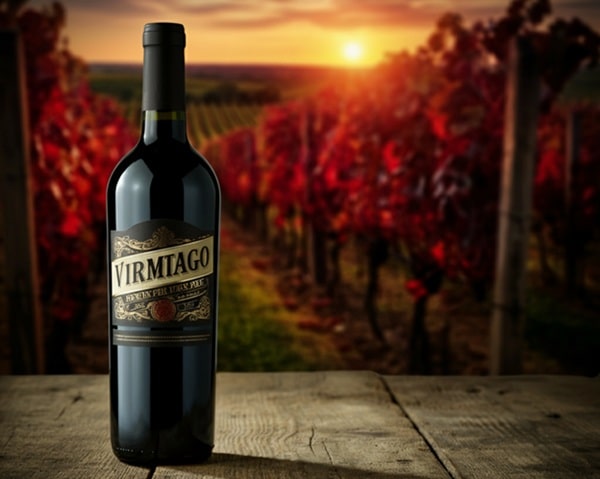Haryana, the land of warriors and folklore, is not just famous for its rich history, vibrant festivals, and agricultural prosperity but also for its diverse and energetic folk dances. The traditional dances of Haryana reflect the simple, rural lifestyle of its people, filled with joy, devotion, and celebration.
Most folk dances in Haryana are performed during festivals, marriages, and social gatherings, and they are deeply connected to the daily lives, emotions, and traditions of the people. These dances are accompanied by traditional musical instruments like the dhol, nagara, been, khartal, and manjira, creating a lively and rhythmic atmosphere.
Here is a detailed look at some of the most popular traditional dances of Haryana and their cultural significance.
1. Ghoomar – The Graceful Folk Dance
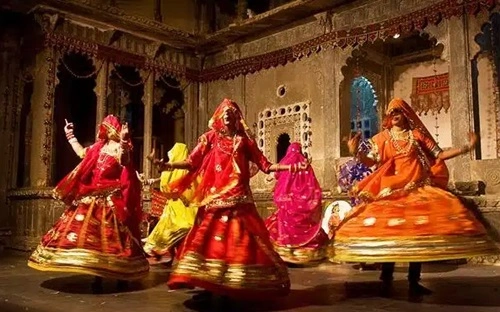
One of the most popular folk dances of Haryana, Ghoomar is a traditional women’s dance that originated in the Ahir and Rajput communities. It is performed in circular formations, with dancers moving gracefully while wearing colorful ghagras (long skirts) and veils.
- Features: Slow, swirling movements, rhythmic claps, and melodious folk songs.
- Themes: Celebration of womanhood, happiness, and cultural heritage.
- Occasions: Performed during festivals, weddings, and Teej celebrations.
Ghoomar is also popular in Rajasthan, but in Haryana, it has a distinct Haryanvi folk touch, making it an important part of the state’s traditional dance forms.
2. Phag Dance – The Harvest Celebration
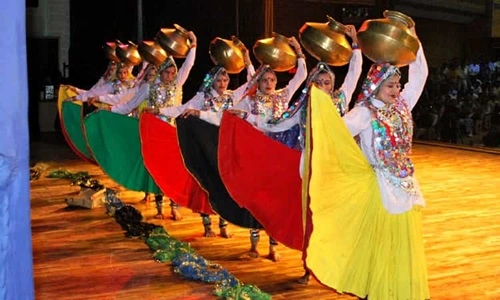
Phag dance is a vibrant folk dance performed by both men and women to celebrate the arrival of the spring season and the harvest of crops. The word “Phag” comes from the Hindu month of Phalgun, during which the dance is performed.
- Features: High-energy movements, mimicking farming activities like sowing, plowing, and harvesting.
- Themes: Joy of harvest, prosperity, and gratitude to nature.
- Occasions: Performed during the Holi festival and harvest season.
Phag dance reflects the agrarian roots of Haryana, where farming is not just a livelihood but a celebration of life itself.
3. Dhamal – The Warrior’s Dance
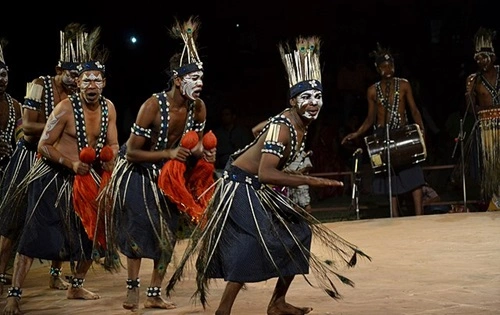
Dhamal is a traditional dance of men, believed to have been introduced by the Jat community. It is performed with great energy, depicting the bravery and warrior spirit of the people of Haryana.
- Features: Fast-paced footwork, powerful expressions, and dhol beats.
- Themes: Victory, valor, and warrior-like enthusiasm.
- Occasions: Performed during festivals, marriages, and special occasions.
This dance form showcases the bold and fearless nature of the Haryanvi people, making it an important part of their cultural identity.
4. Khoria Dance – The Wedding Dance of Women
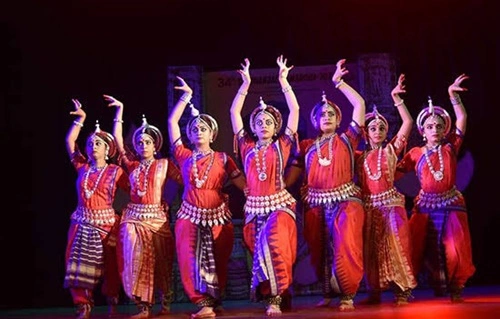
Khoria is an exclusive women’s dance, mainly performed during weddings and special celebrations. It is similar to Ghoomar but involves more intricate footwork and hand movements.
- Features: Synchronized steps, circular formations, and rhythmic clapping.
- Themes: Joy of marriage, blessings, and feminine grace.
- Occasions: Performed during weddings, family celebrations, and festive gatherings.
Women wear brightly colored traditional attire and sing folk songs, adding to the beauty of the performance.
5. Jhumar – The Soft and Melodious Dance
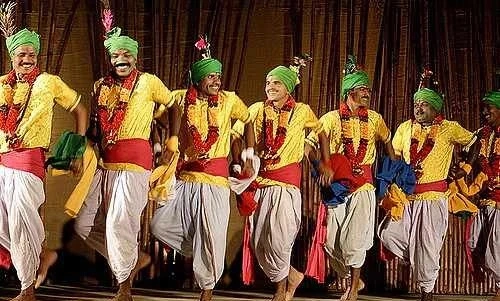
Jhumar is a slow, rhythmic dance performed by men, particularly in the southern regions of Haryana. It is known for its elegant hand gestures and relaxed movements.
- Features: Gentle swaying, expressive hand movements, and soulful singing.
- Themes: Love, nature, and the beauty of village life.
- Occasions: Performed during weddings, fairs, and cultural events.
Jhumar is an emotional and melodious dance that brings out the inner joy of the performers.
6. Ras Leela – The Devotional Dance of Krishna
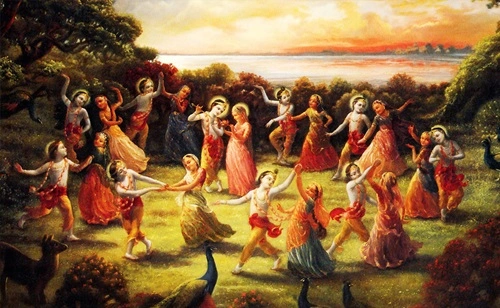
Ras Leela is a religious and cultural dance that depicts the life and divine love of Lord Krishna and Radha. It is particularly popular in the Braj region of Haryana, which has strong historical and spiritual ties to Lord Krishna.
- Features: Dramatic storytelling, devotional songs, and colorful costumes.
- Themes: The love and playfulness of Krishna with the Gopis.
- Occasions: Celebrated during Janmashtami and religious festivals.
This dance form is deeply rooted in the Bhakti (devotional) movement and is an essential part of temple festivities and religious processions.
7. Loor – The Spring Dance of Women
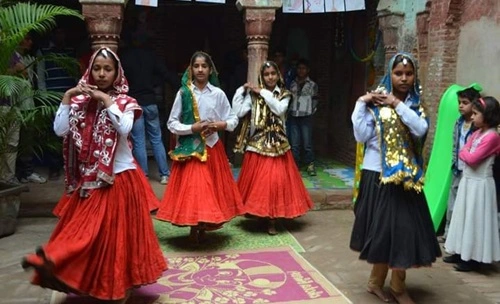
Loor dance is performed by young women during the spring season, especially around Holi. The word “Loor” is derived from the playful teasing and fun elements of the dance.
- Features: Quick steps, playful interactions, and joyful expressions.
- Themes: Youthfulness, joy, and the arrival of spring.
- Occasions: Holi and other spring festivals.
Loor dance is a way for young girls to celebrate their happiness, making it one of the most cheerful dance forms of Haryana.
8. Saang – The Folk Theatre Dance
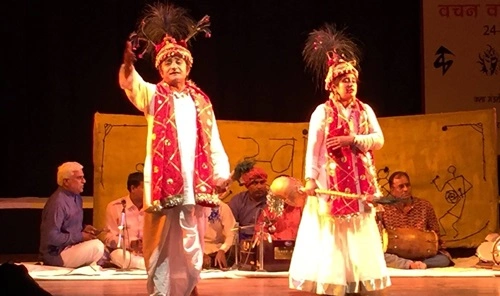
Saang (also called Swang) is a folk theatre and dance-drama that combines music, storytelling, and acting. It is performed by both men and women and has elements of humor, devotion, and social messages.
- Features: Dramatic dialogues, folk songs, and expressive dance.
- Themes: Mythological stories, historical events, and social issues.
- Occasions: Performed at village gatherings, fairs, and cultural events.
Saang is an artistic blend of dance and theatre, making it one of the most unique traditional performances in Haryana.
Conclusion
Haryana’s traditional dances are a reflection of its people’s lifestyle, emotions, and historical legacy. Whether it’s the warrior spirit of Dhamal, the grace of Ghoomar, or the joyous celebration of Phag and Loor, each dance form holds a deep cultural significance.
These folk dances not only preserve Haryana’s cultural identity but also provide a medium for expression and celebration. As modernization continues, efforts are being made to revive and promote these traditional dances through cultural festivals and performances.
From rural villages to international stages, Haryana’s folk dances continue to enchant audiences, keeping the vibrant spirit of the state alive for future generations.

